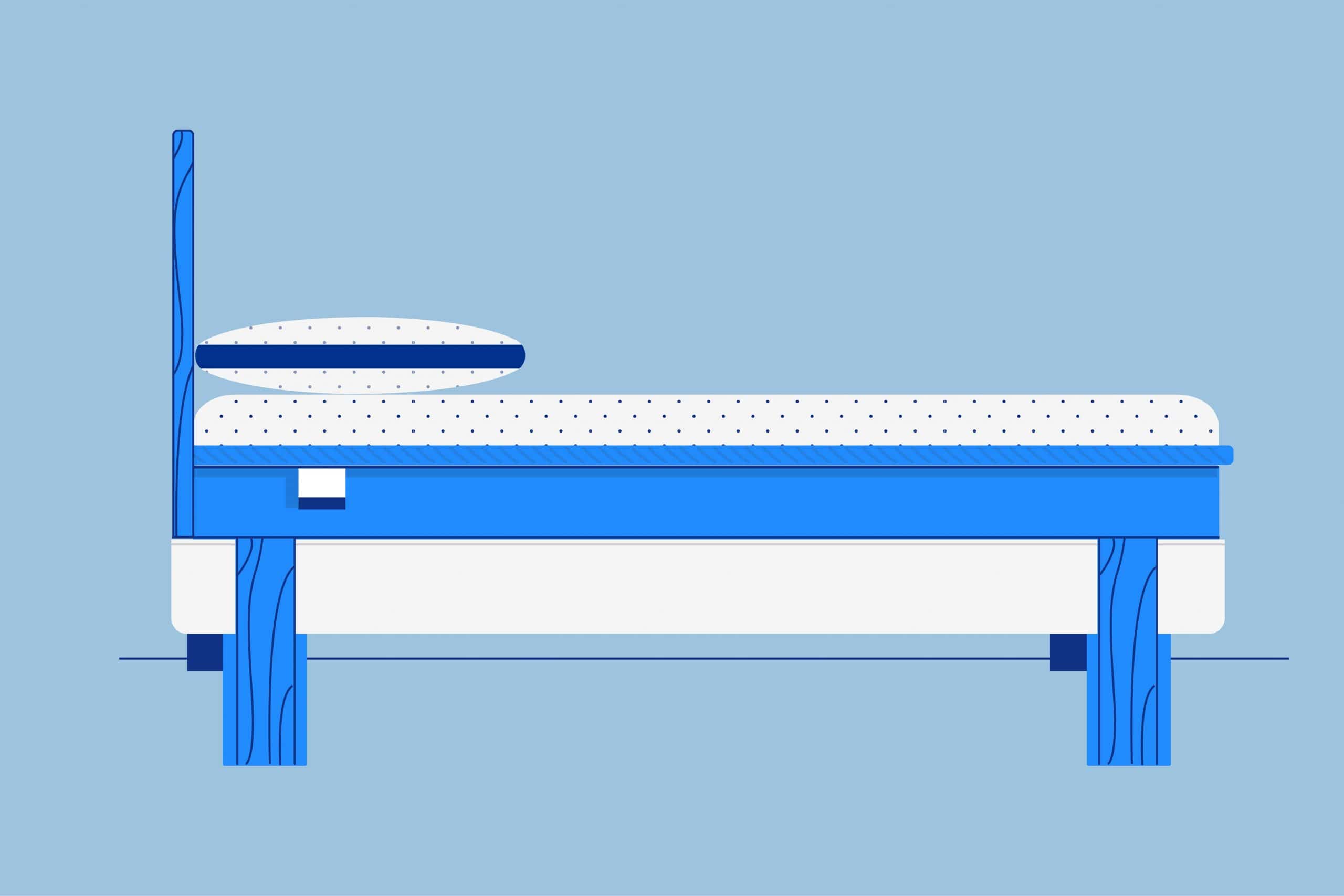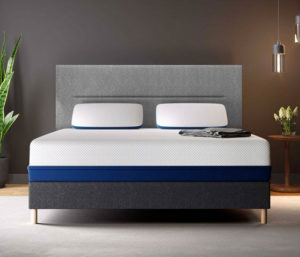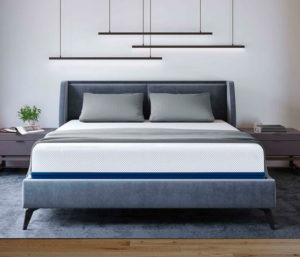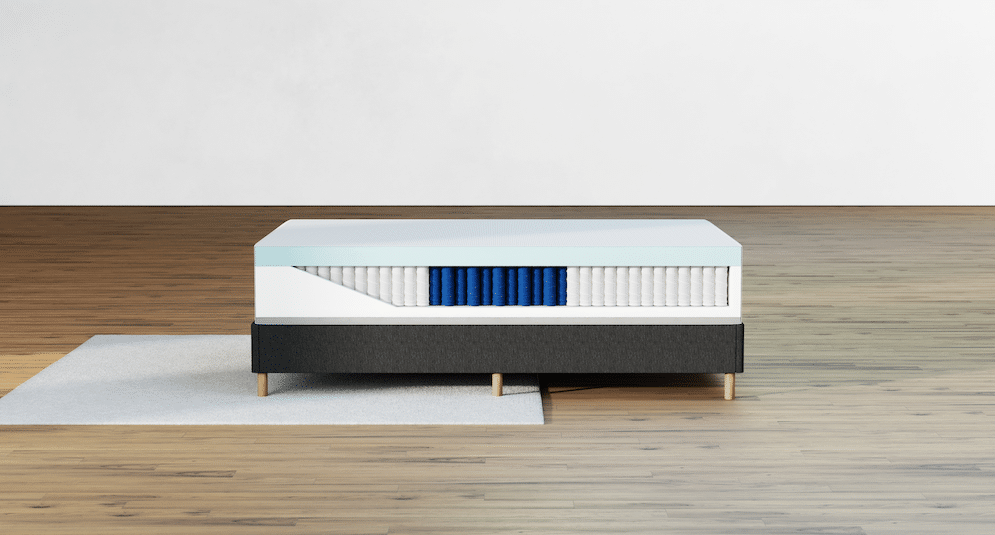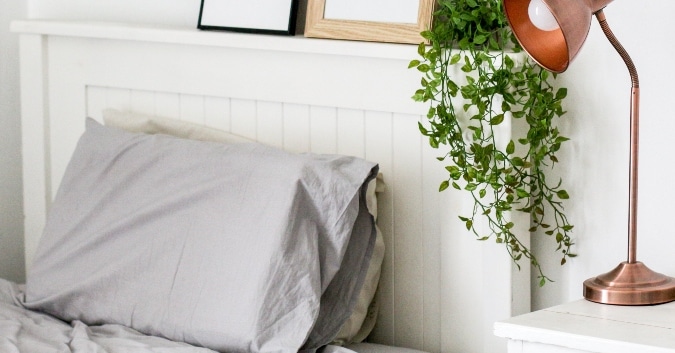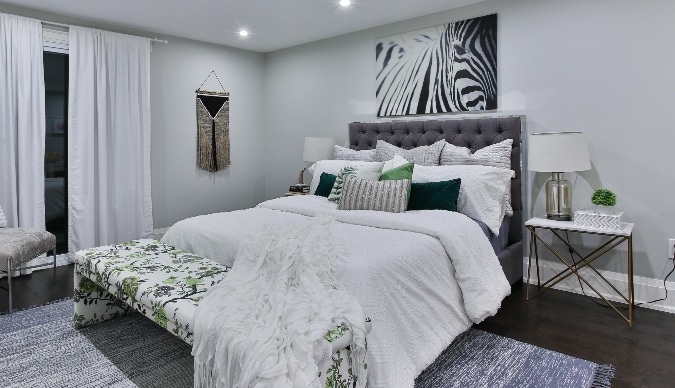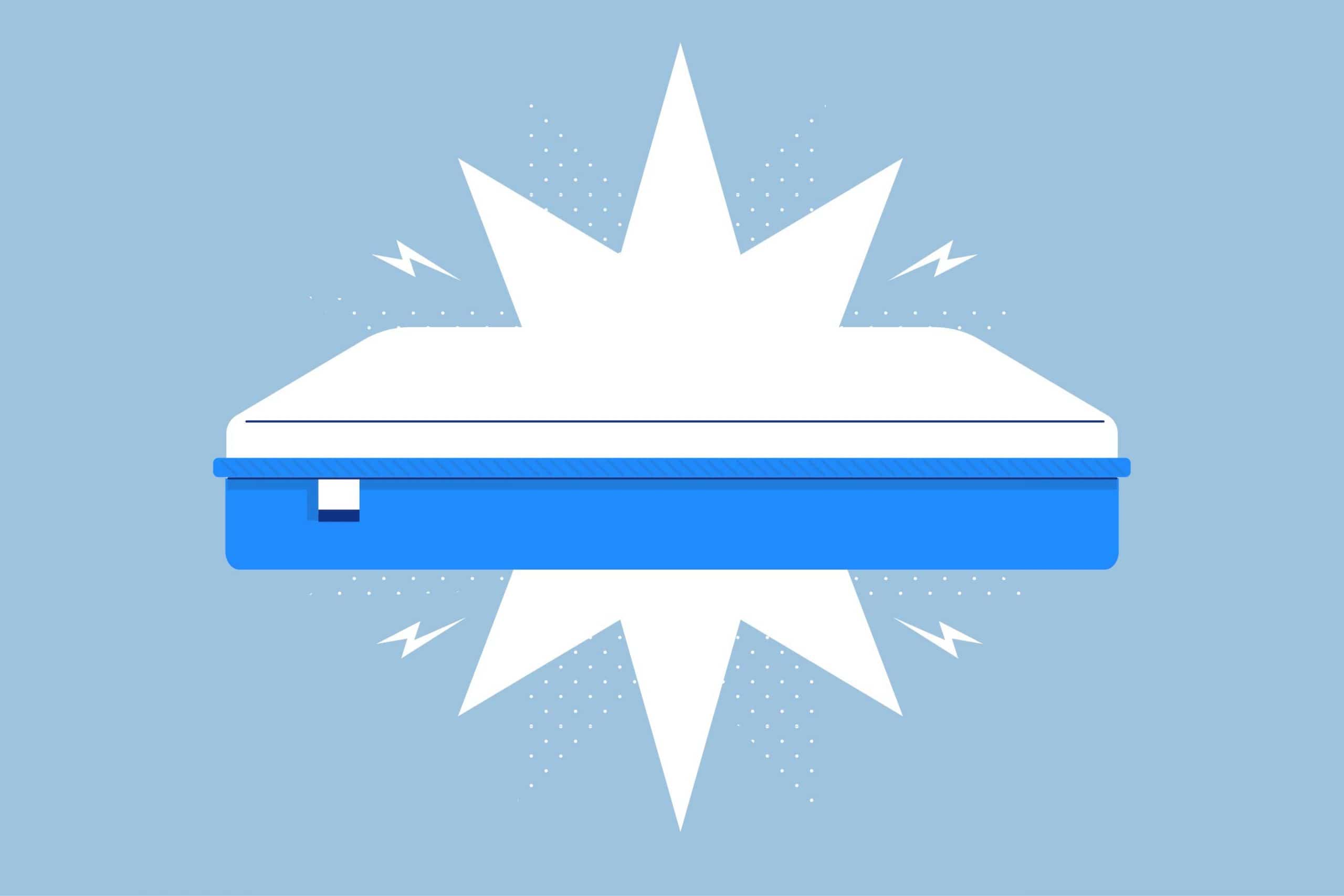Getting a solid eight hours doesn’t have to be rocket science— it all comes down to your mattress and the way you sleep on it. Your sleeping position can have a major effect on your health and even your appearance, so understanding the pros and cons associated with every position can lead you to a better night’s sleep.
If you’re not sure what your preferred sleeping position is, pay attention to whichever position you’re most comfortable in as you fall asleep. Most of us are combination sleepers, meaning we change positions all night.
While there’s no singular “best sleep position” for everyone, side sleeping is surely one of the better options for overall health. Currently, it’s also the most popular sleep position— 63% of Americans sleep on their side, 14% on their back, and 16% on their stomach. Let’s examine the benefits and downsides to sleeping this way as well as which mattress might be best for lateral sleepers.
Quick Guide: A 30-Second Summary
Best Memory Foam Mattress for Side Sleepers
Amerisleep AS4
Best Soft Mattress for Side Sleepers
Amerisleep AS5
Best Mattress for Side Sleepers with Back Pain
Amerisleep AS5 Hybrid
Best Latex Mattress for Side Sleepers
Organica
Best Mattresses for Side Sleepers
Best Memory Foam Mattress for Side Sleepers: AS4
The Amerisleep AS4 mattress offers plenty of cushioning comfort for side sleepers’ hips and shoulders. Featuring four inches of pressure-relieving Bio-Pur® in the comfort layer, the AS4 offers a truly cloud-like, weightless sleep experience.
The thick comfort layer distributes your weight across the mattress and helps you feel like you’re floating. And don’t worry, the thin layer of zoned support below ensures you never sink too far. See why eachnight rates The AS4 as the best mattress for side sleepers.
Best Soft Mattress for Side Sleepers: AS5
The Amerisleep AS5 was made for the dedicated side sleeper. It features a combination of pressure-relieving and responsive foam layers to deliver both comfort and support.
The AS5 starts with 3 layers of plant-based memory foam and is followed by 2 inches of our bouncy Active Flex to prevent uncomfortable sinkage and maintain healthy sleeping postures. The AS5 is great for side sleepers avoiding back and hip pain that need a bit more to maintain alignment.
Best Mattress for Side Sleepers with Back Pain: AS5 Hybrid
To appeal to side sleepers who prefer a bit of extra bounce, we re-imagined the Amerisleep AS5 as a hybrid. The pocket coils bounce back quickly along with the foam layers on top, making this mattress one of the softest (but equally supportive) beds in our lineup. Side sleepers need a balance of softness and even support to avoid numbness or misalignment, and the AS5 Hybrid offers just that.
Best Latex Mattress for Side Sleepers: Organica
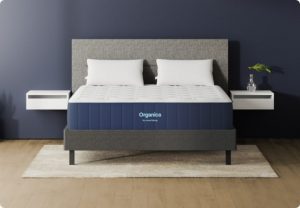
We made the Amerisleep Organica for sleepers who want a completely natural mattress. The medium firmness of this latex hybrid is great if you’re a side or combination sleeper. This bed is also great for heavy individuals because it prevents excess sinking and spinal misalignment.
The Organica’s soft cover is made with organic cotton and tufted rosettes to secure the layers of the mattress in place and provide maximum comfort and breathability.
Just beneath the cover are layers of New Zealand Joma Wool® and Talalay latex. Joma Wool® is a natural flame barrier, while Talalay latex is bouncy and pressure relieving.
The mattress’s support system is made from pocketed coils for excellent motion isolation, durability, and adaptability. Since these coils are wrapped, they provide more contouring than traditional innerspring coils. Beneath the pocketed coils is a thin layer of durable Dunlop latex to absorb shock and provide further protection against sagging and indentations.
The Amerisleep Organica is GOTS, STANDARD 100 by OEKO-TEX®, Rainforest Alliance, and eco-INSTITUT certified.
Health Benefits of Side Sleeping
Side sleeping can be the healthiest position to sleep in, especially if you suffer from lower back pain, obstructive sleep apnea, or are pregnant. It also opens the airways in a way that prevents snoring or acid reflux symptoms from flaring up.
Regardless of sleeping position, everyone should choose a bed that offers excellent neck, back, and spinal support, keeping everything in a neutral position. Side sleeping supports the natural curve of your spine, but your mattress can change that— for better or worse.
The most popular side sleeping variation is the fetal position when the sleeper curls their knees inward. Research shows this position can help prevent glymphatic diseases like Alzheimer’s or Parkinson’s since the brain clears waste more efficiently when you’re on your side.
Pregnant women should stick to side sleeping as much as possible, especially in the second and third trimesters. This position allows for better blood flow and prevents the uterus from pressing up against the liver.
The log position is the other variation side-sleepers prefer: in this position, the sleeper’s arms and legs are straight. This position may reduce sleep apnea symptoms and ward off back pain.
Downsides to Side Sleeping
Sleeping in the lateral position comes with lots of perks, but there can be disadvantages if you’re using an inadequate pillow or mattress.
Contrary to popular belief, a softer mattress and pillow are not always best. Side sleepers need to keep their spine and hips “lifted,” while not arching them unnaturally. A plush mattress can cause you to sink down too far, throwing the spine, hips, and back out of alignment.
Look for a mattress that supports and relieves pressure points. This will help prevent paresthesia, Verified Source National Library of Medicine (NIH) World’s largest medical library, making biomedical data and information more accessible. View source or that familiar “pins and needles” feeling you get when a limb falls asleep. Side sleepers are more prone to this problem, especially if they sleep with their arms under the pillow or at their sides. If your weight cuts off circulation to the limbs, paresthesia will cause you to wake up, disrupting the sleep cycle.
Best Mattress Types for Side Sleepers
Foam
Foam mattresses are quite popular these days thanks to their unique amalgamation of soft, pressure relief, and consistent, even support. They are especially popular with bed-in-a-box companies because they can easily be compressed in a box and shipped to the customer’s door. If you’re searching for the best bed in a box, you’ll primarily come across foam beds.
If you’re a side-sleeper thinking about buying a foam mattress, make sure you choose one with a substantial support layer. In foam mattresses, this is usually made with a thick layer of high-density foam. This support layer can also ensure the mattress doesn’t sag or deteriorate quickly.
Most companies use two types of foam to make their mattresses— polyurethane foam, or polyfoam, which is found in the base support layer. The second foam type is viscoelastic polyurethane foam or memory foam. This is used as the top comfort layers or transitional layers of the mattress.
Without proper comfort layers and equally supportive base layers, side sleepers will find themselves shifting uncomfortably through the night, waking up with pain, or sinking down into the mattress.
Side sleepers should look for a lower-density mattress that provides cushioning and alignment. Your weight is also a factor since the more you weigh, the higher density your mattress should be. Average weight side sleepers (130-230 lbs) should go for the medium mattress while heavyweight side sleepers (more than 230 lbs) may be more comfortable on a medium to a firm mattress.
Latex
You’ve probably seen latex in other products like medical gloves or kitchenware, but what about in a mattress? Latex mattresses are becoming more and more popular in the mattress world thanks to their soft, springy feel and durability. On average, latex mattresses last 5-7 years longer than foam mattresses.
Side sleepers looking for a soft place to land may find a latex bed is perfect for their needs. Latex mattresses are typically made with foam and latex. Usually, the latex appears as the comfort layer or transitional layer and sometimes even in the support cores.
Like foam, latex conforms closely to the body, alleviating pressure and cushioning to the most sensitive body parts like the hips, spine, and back. Another perk of latex is its excellent motion isolation– you shouldn’t feel “trapped” on a latex bed or get jostled awake by your restless sleeping partner. That’s because unlike foam, latex adjusts to your curves rather than sinking beneath them as foam does.
Innersprings and Hybrids
Innerspring beds, or coil beds, have been around the longest. They were the first invented in 1871, not too long after the steel coil spring came into being. Older innerspring models were notoriously uncomfortable because their construction focused more on bounce and support than pressure relief or comfort.
Today, innerspring mattresses employ plenty of comfort layers made with foam, latex, or both to offset the stiffness of the innerspring. Additionally, coils in the base are often wrapped in fabric to make them softer and more prone to motion isolation.
Innersprings can be suitable for side sleepers as long as they have plenty of foam or latex layers that cushion and contour curves. Note that many innerspring beds are firmer than some foam or latex models, so side-sleepers should make sure they try out a few different models if possible.
Since innersprings are not known for their pressure relief, a hybrid mattress can be a suitable compromise for side-sleepers. Hybrids are made of 50% foam and 50% coils– by definition, a hybrid must have at least 3 inches of foam, and most have much more than that.
How Firm Is Too Firm?
As far as firmness goes, a medium mattress is typically best for side sleepers since it offers equal amounts of pressure relief and support. Since “medium” can vary depending on the brand, you can also keep an eye out for a firmness scale. Usually, most companies will use a scale from 1-10 when rating a mattress— a one is the softest, most plush mattress, while a ten is very firm, like a futon.
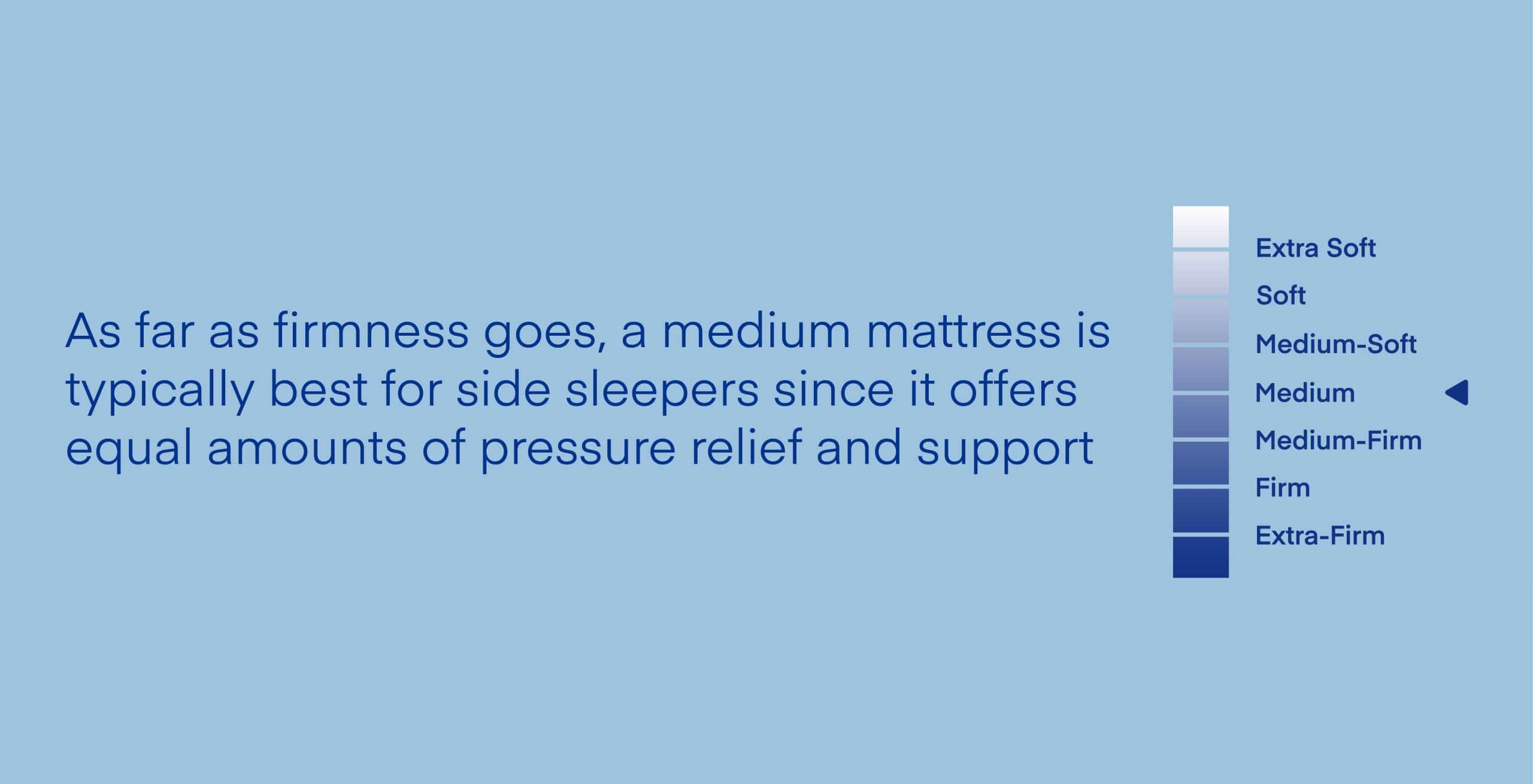
A true medium is between 5-7 on this scale and is often marketed as “universally comfortable” for most sleepers. Still, we recommend you try out different firmness levels and brands in a mattress store before making a purchase if you can.
Pillows for Side Sleepers
Once you choose the right mattress, you will need to pay special attention to your pillow. A good mattress is definitely a huge part of the comfort equation, but your pillow can make or break your night.
Problems specific to side-sleepers can be remedied with a good pillow. Side-sleeping can cause shoulder pain, jaw pain, and even facial wrinkles. A supportive pillow with generous comfort layers will take the pressure off your arms and upper body, alleviating shoulder and jaw pain. Additionally, a silk or satin pillowcase can prevent wrinkles from forming too prematurely.
A pillow’s loft, or thickness, will tell you how comfortable it is depending on your preferred sleeping position. Side sleepers need to keep their necks straight and neutral. A too-thick pillow will cause strain and neck pain, and one that’s too thin or flat will make the head droop or sink— the perfect storm for an uncomfortable, restless night! Side sleepers will most likely achieve their most comfortable sleep on a medium-loft pillow.
Memory foam mattresses and memory foam pillows are best for side sleepers since they offer support for spinal and neck alignment as well as targeted pressure relief. Down pillows can work, but side sleepers may need to fold and fluff the pillow a lot to make it supportive enough. Buckwheat pillows are another less common option, but they do offer plenty of support and contouring.
Which Side is Best?
If you sleep on your side, you’re in a good place. Side sleepers are less likely to snore, suffer from acid reflux flare-ups, or wake up with pain. But is there one side that’s healthier than the other?
There are two significant reasons why you should sleep on your right side. First, it puts less pressure on your internal organs. Second, it promotes optimal heart health. It’s no coincidence that, the older we get, the more likely we are to sleep on our right side. This is because sleeping on the right side Verified Source ScienceDirect One of the largest hubs for research studies and has published over 12 million different trusted resources. View source increases blood and oxygen to the heart.
Factors Affecting Sleep Position
Age
As we get older, we tend to gravitate towards side-sleeping. Combination sleeping is also less rare with age. Children shift sleeping positions more than twice as often as adults over 65 do! Sleep position also has a bigger impact on your health as you age— you need more support and pressure-relief as your body grows stiffer and more prone to pain. This makes side-sleeping a natural choice for older folks.
Gender
Women are more likely than men to choose side-sleeping, particularly the fetal position. This is especially true for pregnant women, who should avoid sleeping on the back and stomach. Sleeping on the back when pregnant can exacerbate acid reflux, heartburn, back pain, and reduce blood circulation, causing paresthesia.
Other Health Conditions
If you suffer from lower back pain, you’re probably more likely to sleep on your side. Switching to side sleeping and investing in the best mattress for back pain is an easy way to alleviate discomfort. Additionally, if you deal with sleep apnea or acid reflux, you’re going to most comfortable on your back or side.
Changing Your Sleep Habits
Let’s say you sleep on your stomach or your back and are learning neither of these positions is very comfortable for you or conducive to sleep. Is it possible to teach an old dog new tricks? Well, when it comes to changing your sleep habits, anything is possible with practice!
You can start training yourself to sleep sideways by placing a pillow between your legs at the knees. This will also give you a little bit more support as you adjust to a new position.
On top of posture, the pillow you use comes into play because back and stomach sleepers prefer pillows with very different lofts and comfort levels than side sleepers. A flat pillow, liked by stomach sleepers, will not be supportive enough if you’re on your side. Likewise, a lofty, soft pillow liked by back and stomach sleepers may pitch the neck out of alignment if you use it on your side.
Choose a pillow with medium-loft and firmness for optimal support and cushioning while side-sleeping.
Another option? Adjustable beds. While adjustable beds are more often used with back sleepers, the pillow and foot articulation also work well wide side sleepers. By putting the bed into the “zero-gravity” position, you take the pressure off your back and open your airways.
Is the Right Mattress Out There?
Choosing the best mattress for a good night’s sleep doesn’t have to be hard— just make sure your mattress isn’t! Remember: side sleepers are most likely to get the best sleep of their lives on a medium mattress with ample pressure-relief, a durable support core in the form of high-density foam or springs, and soft contouring ability.
FAQs
How firm should a mattress for side sleepers be?
Your preferred firmness typically depends on a few factors, one of which is your sleeping position. However, your weight, body type, and even age can play a part in the firmness you choose. Most side sleepers tend to prefer medium, medium-soft, or soft mattresses. Anything firmer than medium can cause numbness or misalignment, which in turn negatively impacts sleep quality.
Should side sleepers have a firm or soft mattress?
We recommend side sleepers choose a mattress that’s between medium and soft on the firmness scale. Keep in mind that what one company markets as “medium” could actually feel more firm or soft than you might like. That’s why buying a mattress with an attached sleep trial is so important.
Is memory foam good for side sleepers?
Yes, memory foam is an excellent mattress type for side sleepers. It contours closely to the body for customized cushioning. High-quality foams, like those found in Amerisleep mattresses, bounce back quickly, so you won’t sink down or feel “trapped.”
What is the best mattress for a side sleeper with hip pain?
Side sleepers are more susceptible to hip pain simply because of how they sleep at night; all of their weight is pressed down on one side, which can lead to a higher risk of pelvic misalignment and sore hips. To avoid this, we recommend a medium, medium-soft, or soft mattress with a good support system in the base. That way, the soft layers on top will cushion just enough without causing more pain from sinking too much.
About the author
McKenzie Hyde is a Certified Sleep Science Coach and a full-time writer focused on sleep health and the mattress industry. She currently writes articles on a variety of topics, ranging from sleep hygiene to the newest trends in the mattress and bedding industry. Just some of the topics she has covered include best sleep practices for students, the consequences of going without sleep, and choosing the right bed if you suffer from back pain. McKenzie Hyde holds a Master of Arts degree from Utah State University where she studied literature and writing. While there, she taught argumentative writing and wrote a variety of articles and analyses for literary and academic journals.
View all posts